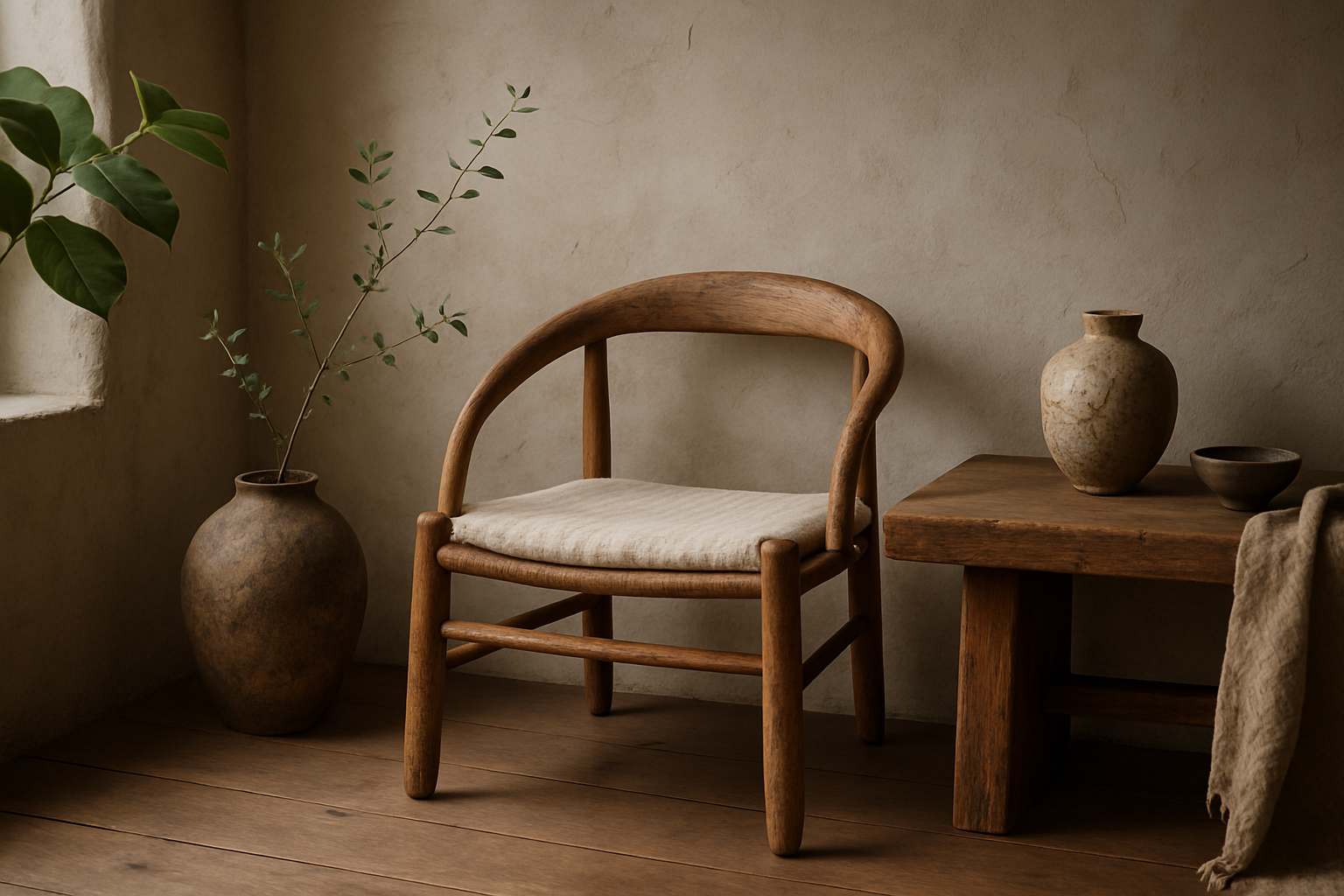Whimsical Wabi-Sabi: Embracing Imperfection in Home Design
Imagine walking into a home where chips, cracks, and weathered surfaces aren't flaws, but cherished features. Where asymmetry reigns supreme, and the patina of age is celebrated rather than concealed. Welcome to the world of whimsical wabi-sabi, a design philosophy that's capturing the hearts of homeowners seeking authenticity and charm in an increasingly polished world.

The Roots of Wabi-Sabi
Wabi-sabi originated in 16th century Japan as a reaction to the prevailing aesthetic of ornateness and perfection. The term combines two concepts: wabi, which refers to the beauty of simplicity and humble living, and sabi, which embraces the passage of time and the marks it leaves behind. Together, they form a worldview that finds beauty in the imperfect, impermanent, and incomplete.
In traditional Japanese culture, wabi-sabi manifested in tea ceremonies, where simple, handmade cups were prized over ornate porcelain, and in architecture, where natural materials were left exposed to weather and age gracefully. This appreciation for the modest and worn stood in stark contrast to Western ideals of symmetry and permanence.
Whimsy Meets Wabi-Sabi
The modern interpretation of wabi-sabi in home design takes these ancient principles and infuses them with a sense of playfulness and individuality. Whimsical wabi-sabi interiors celebrate imperfection while incorporating unexpected, often colorful elements that bring joy and personality to a space.
This approach encourages homeowners to embrace their quirks and tell their unique stories through their living spaces. It’s about finding beauty in the cracks of a beloved ceramic bowl, or joy in the uneven edges of a handmade blanket. The result is a home that feels lived-in, loved, and deeply personal.
Key Elements of Whimsical Wabi-Sabi Design
Texture plays a crucial role in whimsical wabi-sabi interiors. Rough-hewn wood, patinated metals, and raw textiles create a tactile experience that invites touch and exploration. These textures are often juxtaposed with smoother surfaces to create visual interest and depth.
Color palettes in whimsical wabi-sabi homes tend to be earthy and muted, drawing inspiration from nature. However, pops of unexpected color are welcomed, adding that whimsical touch. Think a vibrant cushion on a weathered wooden chair or a brightly painted door frame in an otherwise neutral room.
Asymmetry and irregular shapes are celebrated. Mismatched furniture, off-center artwork, and organically shaped objects all contribute to the wabi-sabi aesthetic while adding an element of surprise and delight.
Incorporating Whimsical Wabi-Sabi in Your Home
To bring whimsical wabi-sabi into your space, start by letting go of perfectionism. Embrace the marks of use on your furniture and decor items. That coffee stain on your favorite armchair? It’s now a cherished memory of cozy mornings.
Seek out handmade and artisanal pieces. These items naturally embody the wabi-sabi spirit, with their slight irregularities and unique character. Mix these with mass-produced items for an eclectic, collected-over-time look.
Incorporate natural elements like plants, stones, or driftwood. These bring a sense of the outdoors in and add organic shapes and textures to your space. Don’t be afraid to let your plants grow a bit wild or to display found objects from nature walks.
The Art of Kintsugi in Home Decor
Kintsugi, the Japanese art of repairing broken pottery with gold, is a perfect embodiment of wabi-sabi principles. This technique not only repairs broken items but elevates them, turning imperfections into beautiful features. In whimsical wabi-sabi interiors, kintsugi-inspired pieces can serve as stunning focal points.
Consider displaying a kintsugi-repaired bowl as a centerpiece, or try your hand at the technique yourself. The golden seams of a repaired vase can add a touch of unexpected glamour to a rustic shelf arrangement.
Balancing Old and New
While wabi-sabi celebrates age and wear, whimsical wabi-sabi interiors aren’t stuck in the past. The key is to strike a balance between old and new, creating a space that feels timeless rather than dated.
Pair antique furniture with modern art, or place a sleek lamp on a weathered side table. This juxtaposition creates visual interest and prevents the space from feeling too theme-driven or contrived.
Wabi-Sabi in the Digital Age
In our increasingly digital world, the tactile and imperfect nature of wabi-sabi provides a much-needed counterbalance. It encourages us to slow down, appreciate the physical world around us, and find beauty in the everyday.
Consider creating a wabi-sabi inspired tech-free zone in your home. This could be a reading nook with a worn leather armchair and a stack of well-loved books, or a meditation corner with handmade cushions and natural textures.
The Sustainability Angle
Whimsical wabi-sabi aligns beautifully with sustainable living practices. By valuing and preserving older items, repurposing materials, and choosing quality over quantity, this design philosophy naturally lends itself to a more eco-conscious lifestyle.
Embrace the ethos of repair and reuse. Instead of replacing a chipped mug, make it a feature. Turn old fabric into unique throw pillows. These practices not only reduce waste but also add character to your home.
Cultivating a Wabi-Sabi Mindset
Ultimately, whimsical wabi-sabi is as much a mindset as it is a design style. It’s about finding joy in the imperfect, appreciating the beauty of natural aging processes, and creating a home that tells your unique story.
Practice mindfulness in your space. Take time to notice and appreciate the small details - the way light falls on a worn wooden floor, or the intricate patterns in a crackle-glazed vase. This awareness can transform your relationship with your home and the objects within it.
As we navigate an increasingly uncertain world, the principles of wabi-sabi offer a comforting perspective. They remind us that imperfection is not just acceptable, but beautiful. By infusing these ideas with a sense of whimsy and personal expression, we can create homes that are not just visually appealing, but emotionally resonant and deeply comforting.





